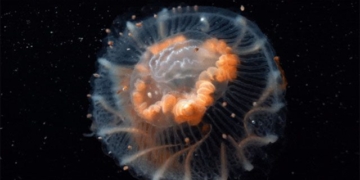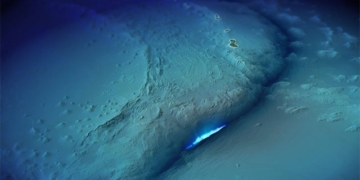Throughout the 4.6 billion years of Earth’s history, whether in the deep blue oceans or vast lands, there have existed some terrifying creatures that humans cannot even imagine. These were ruthless predators at the top of the food chain.
During the reign of these creatures, very few species could withstand them. Although their shapes and characteristics varied due to different habitats, they all were superior rulers in their respective biological eras.
1. Anomalocaris
About 530 million years ago, there existed a terrifying creature known as “the anomalous creature” – Anomalocaris. In the oceans of this era, this strange shrimp was considered the fiercest predator. It possessed large stalked eyes and large front appendages to quickly catch prey.
While Anomalocaris was not adept at moving along the sea floor, it swam very fast. Its gigantic mouth could reach a diameter of 25 cm, sufficient to prey on any large creature of that time.
Moreover, its mouth contained ring-shaped teeth, posing a significant threat to animals protected by mineralized exoskeletons.
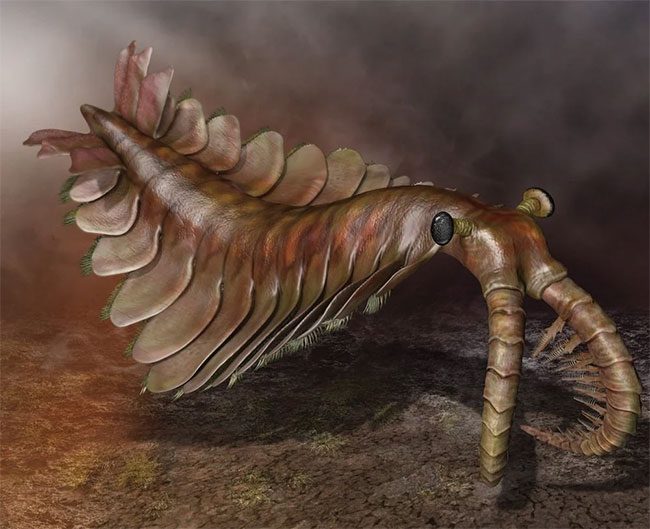
Anomalocaris is a genus of Anomalocarididae, a family of animals considered to be close relatives of arthropod ancestors. The first Anomalocaris fossil was discovered by Joseph Frederick Whiteaves, and another fossil was found by Charles Doolittle Walcott. Anomalocaris is believed to have been a predatory animal.
As an extremely fierce predator, their individual size could reach over 2 meters, while the average size of most other species at that time ranged only from a few millimeters to several centimeters.
However, around 440 million years ago, Anomalocaris mysteriously went extinct. To this day, scientists still wonder why this strange shrimp vanished forever from the surface of the Earth. Various hypotheses have been proposed regarding the extinction of this species, but no convincing answers have emerged.
2. Deinosuchus
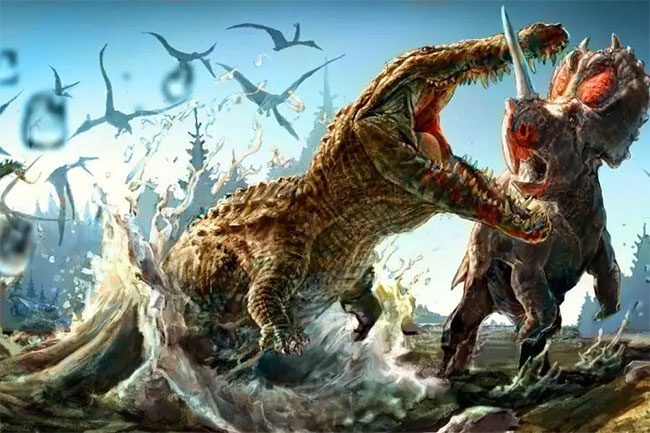
Deinosuchus is an extinct genus of crocodiles, the name meaning “terrifying crocodile,” derived from ancient Greek.
Deinosuchus is one of the largest crocodile species to have ever existed on Earth, living during the Late Cretaceous period about 75 million years ago and distributed along the eastern coast of North America.
Due to incomplete fossil discoveries of Deinosuchus, there has always been much debate about their length. It was not until 1954 that scientists initially estimated the length of Deinosuchus to be around 10 meters.
Deinosuchus is generally believed to have employed a hunting style similar to that of modern crocodiles. They preferred to lurk in the water, waiting for the right moment to ambush dinosaurs or other terrestrial animals approaching the shore.
Its large size and powerful jaws made Deinosuchus extremely dangerous when hunting. Once a dinosaur was attacked, its strong jaws could easily clamp down on the prey and subsequently subdue it with a powerful bite.
After a long evolution, Deinosuchus became the top predator along the coast at the end of the Cretaceous period. Scientists have discovered several dinosaur fossils with bite marks from Deinosuchus near Texas, USA. These fossil evidences show that Deinosuchus was indeed capable of hunting dinosaurs on land.
3. Mosasaurus
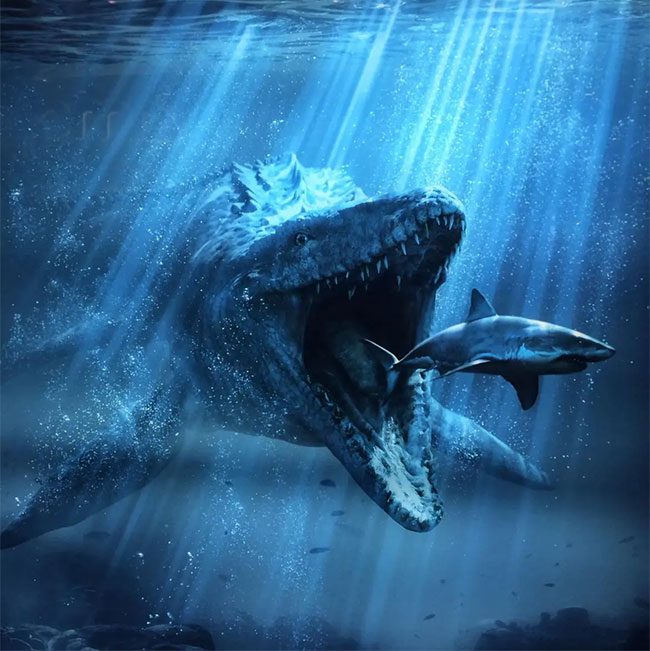
Mosasaurus is a genus of mosasaurs, a group of extinct lizards that lived in aquatic environments. They existed during the Maastrichtian stage of the Late Cretaceous, dating back about 70 to 66 million years ago, in Western Europe and North America.
According to current fossil data, Mosasaurus existed for a relatively short time but was a species that evolved rapidly and dominated the oceans during its existence.
This giant creature could grow up to 21 meters long and weigh up to 33 tons, making its combat effectiveness extremely terrifying. Remarkably, they lived in groups, had high IQs, and displayed excellent teamwork, similar to modern orcas.
In terms of combat experience or striking power, Mosasaurus excelled. The ancestors of mosasaurs were originally small terrestrial lizards, which, after a long evolutionary process, gradually adapted to marine life.
Their toes transformed into flippers, their bodies became elongated and agile, and their heads and jaws grew large and powerful. They rapidly proliferated towards the end of the Cretaceous period, pushing other ichthyosaurs and plesiosaurs to the brink of extinction.
4. Tusoteuthis
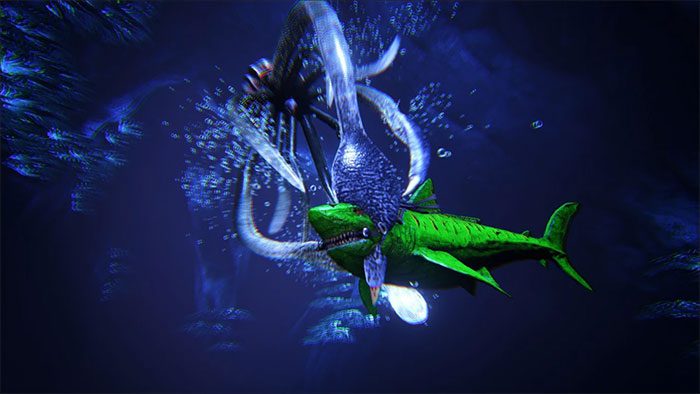
Tusoteuthis is a genus of large extinct enchoteuthine mollusks that lived during the Cretaceous period. Although commonly referred to as squid, they are now believed to be more closely related to modern octopuses.
While Mosasaurus was indeed the dominant species in the ocean, it was not without natural enemies. Scientists have reconstructed a marine creature that coexisted with Mosasaurus, which could actually prey on it. This natural enemy was the largest squid to have ever existed on our planet.
It shares some similarities with modern giant squids. Comparable in size to a mosasaur, the squid Tusoteuthis possessed ten long tentacles capable of gripping prey, immobilizing them, and ultimately suffocating them to death.
Tusoteuthis was a cephalopod similar to other squid-like creatures. However, due to its soft body, the remains of Tusoteuthis could not fossilize, leaving only its hard beak as the lasting trace.
Therefore, the appearance of Tusoteuthis has always been a mystery. Scientists can only attempt to reconstruct the shape and characteristics of Tusoteuthis based on studies and speculations about modern squid.
5. Livyatan melvillei
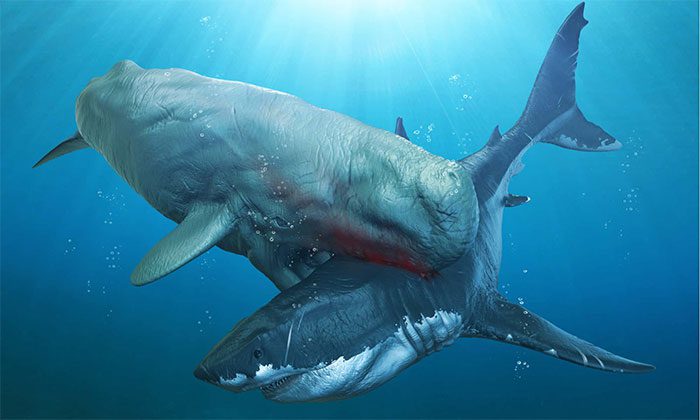
Livyatan melvillei roamed the seas at the same time as giant sharks, making competition between the two species inevitable.
This ancient whale lived in the Miocene seas about 14 million years ago, and we only have its skull and a 40 cm long tooth as a reference sample to understand it.
It is estimated to have had a maximum length of about 17.5 meters and weighed around 65 tons. This ancient whale hunted other large animals and was a top predator of the ocean.
With its sturdy, large head, capable of delivering a bite force of several tons, it also had a unique technique of using its head to strike prey. Like Megalodon, this ancient whale was the top predator of the ocean.
- The land that ‘swallows’ cars in China: Many people regret having to leave their cars behind, and even money won’t make anyone retrieve them
- Fasting for 382 days to lose weight, the miraculous survival of an obese man astonishes the world
- Why did Empress Dowager Cixi eat 20 eggs every day while the cooks had to prepare up to 500?

















































